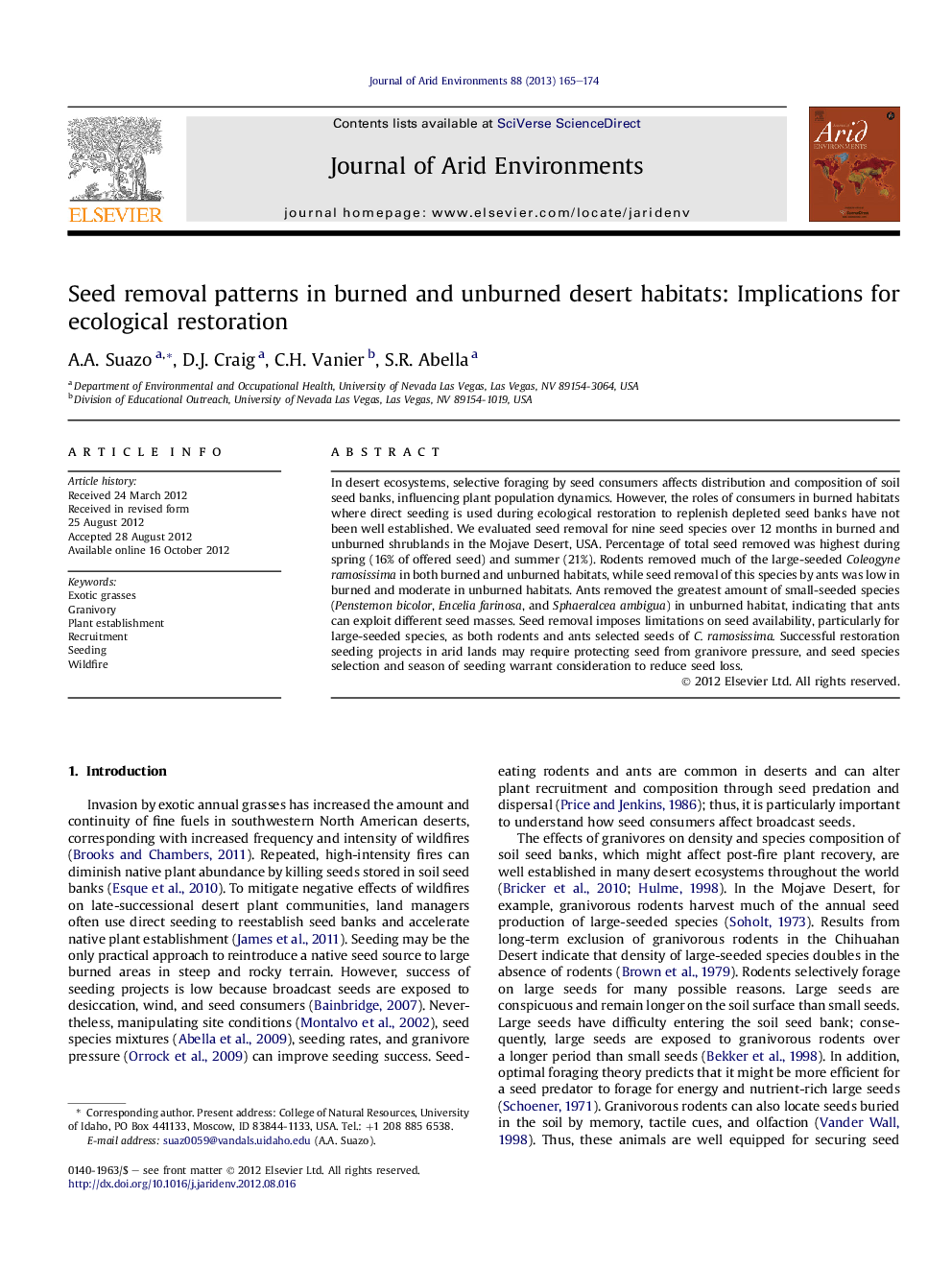| Article ID | Journal | Published Year | Pages | File Type |
|---|---|---|---|---|
| 4393303 | Journal of Arid Environments | 2013 | 10 Pages |
In desert ecosystems, selective foraging by seed consumers affects distribution and composition of soil seed banks, influencing plant population dynamics. However, the roles of consumers in burned habitats where direct seeding is used during ecological restoration to replenish depleted seed banks have not been well established. We evaluated seed removal for nine seed species over 12 months in burned and unburned shrublands in the Mojave Desert, USA. Percentage of total seed removed was highest during spring (16% of offered seed) and summer (21%). Rodents removed much of the large-seeded Coleogyne ramosissima in both burned and unburned habitats, while seed removal of this species by ants was low in burned and moderate in unburned habitats. Ants removed the greatest amount of small-seeded species (Penstemon bicolor, Encelia farinosa, and Sphaeralcea ambigua) in unburned habitat, indicating that ants can exploit different seed masses. Seed removal imposes limitations on seed availability, particularly for large-seeded species, as both rodents and ants selected seeds of C. ramosissima. Successful restoration seeding projects in arid lands may require protecting seed from granivore pressure, and seed species selection and season of seeding warrant consideration to reduce seed loss.
► We evaluated seed removal in burned and unburned desert habitat. ► Both rodents and ants selected to remove large seeds (e.g., Coleogyne ramosissima). ► Ants, however, removed a range of seed sizes. ► Proportion of seeds removed was greatest in spring and summer. ► Protecting seeds from granivore pressure will increase plant establishment.
